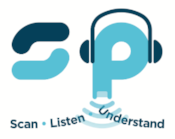Dyslexia Awareness and Assistive Technology
Our awareness of dyslexia, and other reading and learning difficulties, is growing. There are still many myths and misconceptions about these difficulties.
Did you know that dyslexia affects at least 10% of the population?
By gaining a better understanding of how learners can be supported, we can harness skills and abilities that are valuable to our economy and our society. With the advancement of assistive technology, we now know that there is so much more that can be done to support productivity and independence in the classroom, at home and in the workplace.
Being unable to see beyond difficulties with reading, writing and spelling, creates problems. There is a need to understand the reasons for these difficulties, and embrace the realisation that we should not overlook the individual’s academic potential and skills. The deficit viewpoint is unhelpful for everyone. It is good to know that the part of the brain affected by dyslexia difficulties can also provide other helpful skills that are very valuable to businesses.
This is because dyslexia and intelligence are unrelated.
GCHQ and Google have recognised this. They actively seek to employ gifted dyslexic individuals who can contribute to the skills needed in their workforce. As a result, we are starting to understand and value the seven big dyslexia superpowers that are valuable to these important and visionary businesses. Dyslexic skills in demand include the ability to see the bigger picture, to synthesise and understand complex patterns, creativity and visual thinking. The ability to solve problems laterally has generated many dyslexic entrepreneurs.
In these businesses, the individuals who may have been overshadowed by dyslexia are flourishing and making excellent contributions. This is because they are using assistive technology. By understanding and supporting with new tools and ways of teaching, economic prospects, wellbeing, and productivity are improving and everyone benefits.
AT can be software, hardware or devices that ensure independence and productivity for the day-to-day life of the user. It includes apps and software that support the need for text to be converted to speech and vice versa. It can help with organisation and time management. There are many helpful tools that are readily available.
A popular solution in schools is the ReaderPen. This is a device that works without the internet and can be used to study at home, in the library and in the classroom, and provides exceptional opportunities to learn independently. The ReaderPen is a portable device that scans over printed text and reads the words out loud or through headphones. This de-coding is the first step to learning independence and improved understanding. The ExamReader is also being used to support learners in their examinations as a fair adjustment for the learner who struggles to read.
By investigating assistive technology and recognising its value to facilitate improved educational outcomes, we can change the shape of our economic future. Dyslexic individuals have great skills to offer us when we help them to overcome their literacy difficulties with assistive technology tools.
Thanks for reading! Julia
What’s your go-to piece of assistive technology? Let us know in the comments.
